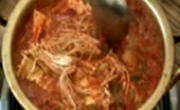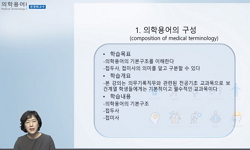연구목적: 나트륨(Sodium)은 직접적인 요석의 성분은 아니나 요석형성의 촉진자 역할을 하는 것으로 알려져 있다. 본 연구에서는 환자-대조군 연구를 통한 요석환자에서 요중 나트륨과 결정 ...
http://chineseinput.net/에서 pinyin(병음)방식으로 중국어를 변환할 수 있습니다.
변환된 중국어를 복사하여 사용하시면 됩니다.
- 中文 을 입력하시려면 zhongwen을 입력하시고 space를누르시면됩니다.
- 北京 을 입력하시려면 beijing을 입력하시고 space를 누르시면 됩니다.
https://www.riss.kr/link?id=A30118222
-
저자
이상철 (충북대학교 의과대학 비뇨기과학교실, 의학연구소)
- 발행기관
- 학술지명
- 권호사항
-
발행연도
2003
-
작성언어
Korean
-
주제어
요석 ; 나트륨 ; 대사 검사 ; Urolithiasis ; Sodium ; Metabolic evaluation
-
KDC
510.000
-
자료형태
학술저널
-
수록면
226-235(10쪽)
- 제공처
- 소장기관
-
0
상세조회 -
0
다운로드
부가정보
국문 초록 (Abstract)
연구목적: 나트륨(Sodium)은 직접적인 요석의 성분은 아니나 요석형성의 촉진자 역할을 하는 것으로 알려져 있다. 본 연구에서는 환자-대조군 연구를 통한 요석환자에서 요중 나트륨과 결정 형성물질과의 관계를 조사하여 그 역할을 규명하고자 하였다.
대상 및 방법: 요석 환자 746명(남자 503명, 여자 243명)과 요석의 과거력이 없는 정상 지원자 101명(남자 50명, 여자 51명)을 대상으로 하였으며, 24시간 소변을 채취하여 요량, 나트륨, 인, 칼슘, 마그네슘, 수산 및 구연산을 측정하였다. 각 군에서 나트륨의 평균 배설량을 비교하였고 또한 다른 요석형성 물질 몇 임상적 특징들과의 비교를 통하여 요석형성에 있어서 요중 나트륨의 역할을 조사하였다.
결과: 고나트륨뇨증은 환자군에 46.6%, 대조군에서 42.6%로 높게 관찰되었으나 두 군 사이에 평균 배설량에는 차이를 보이지 않았다. 요중 나트륨의 배설은 칼슘의 배설 및 요산도의 증가와 의미있는 상관성을 나타내었으며 나트륨이 100 mEq 증가할 때마다 칼슘은 53.2 mg씩 증가하는 것으로 조사되었다. 이전의 보고들과는 달리 구연산의 배설 역시 나트륨의 배설에 양의 상관성을 보였다. 임상적 특징들과의 비교에서는 연령이 증가함에 따라 의미 있게 나트륨의 배설을 감소시키는 것으로 조사되었다.
결론: 이러한 결과로 볼 때 요중 나트륨의 배설 증가 그 자체만으로는 요석의 위험인자로 보기는 어렵다. 그러나 나트륨의 요중 칼슘 배설을 증가시키는 효과는 상당하며 따라서 요석의 재발을 막기 위한 방법으로, 특히 고칼슘뇨증을 동반하는 환자에서는 저염식의 권장이 가장 먼저 시행할 수 있는 조치라고 생각한다.
다국어 초록 (Multilingual Abstract)
Purpose: High dietary sodium from salt abuse has been a well recognized environmental or nutritional risk factor for kidney stone formation and may promote a variety of metabolic changes that may detrimental to stone formers. This study was to determi...
Purpose: High dietary sodium from salt abuse has been a well recognized environmental or nutritional risk factor for kidney stone formation and may promote a variety of metabolic changes that may detrimental to stone formers. This study was to determine the influence of urinary sodium on urolithiasis as a risk factor through the patients-control study.
Materials and Methods: The 24-hour urine specimens of 746 stone formers (503 men and 243 women) and 101 normal volunteer (50 men and 51 women) who had no history of kidney stones were analyzed for sodium, phosphorus, calcium, magnesium, oxalate, pH and citrate. The roles of urinary sodium were determined by comparing the mean excretion of sodium in each group and by investigating the relationship with other lithogenic factors and clinical characteristics.
Results: Although the incidence of hypernatriuria was as much high as 46.6% of stone formers and 42.6% of normal control, there were no significant differences of mean excretion of sodium in each group. The urinary sodium excretion was directly proprotional to that of calcium and pH. An 100 mEq increase of urinary sodium resulted in 53.2mg rise in urinary calcium excretion. Unexpectedly, direct proportion was also observed between urinary excretion of sodium and citrate. Sodium excretion was slightly decreased with age.
Conclusion: These results showed that the increased sodium excretion itself was not a risk factor for urolithiasis but its calciuric action was largely significant. Thus, the dietary restriction of sodium should be considered as a first line approach for the prevention of recurrent urolithiasis, especially in hypercalciurlc stone formers.
동일학술지(권/호) 다른 논문
-
인체 요로상피암에서 angiogenin과 vascular endothelial growth factor의 mRNA발현
- 충북대학교 의과대학 충북대학교 의학연구소
- 전성수
- 2003
-
- 충북대학교 의과대학 충북대학교 의학연구소
- 강종원
- 2003
-
결장을 이용한 식도재건 환자에서 경피 내시경하 결장루술 1예
- 충북대학교 의과대학 충북대학교 의학연구소
- 채희복
- 2003
-
- 충북대학교 의과대학 충북대학교 의학연구소
- 이경무
- 2003




 RISS
RISS






